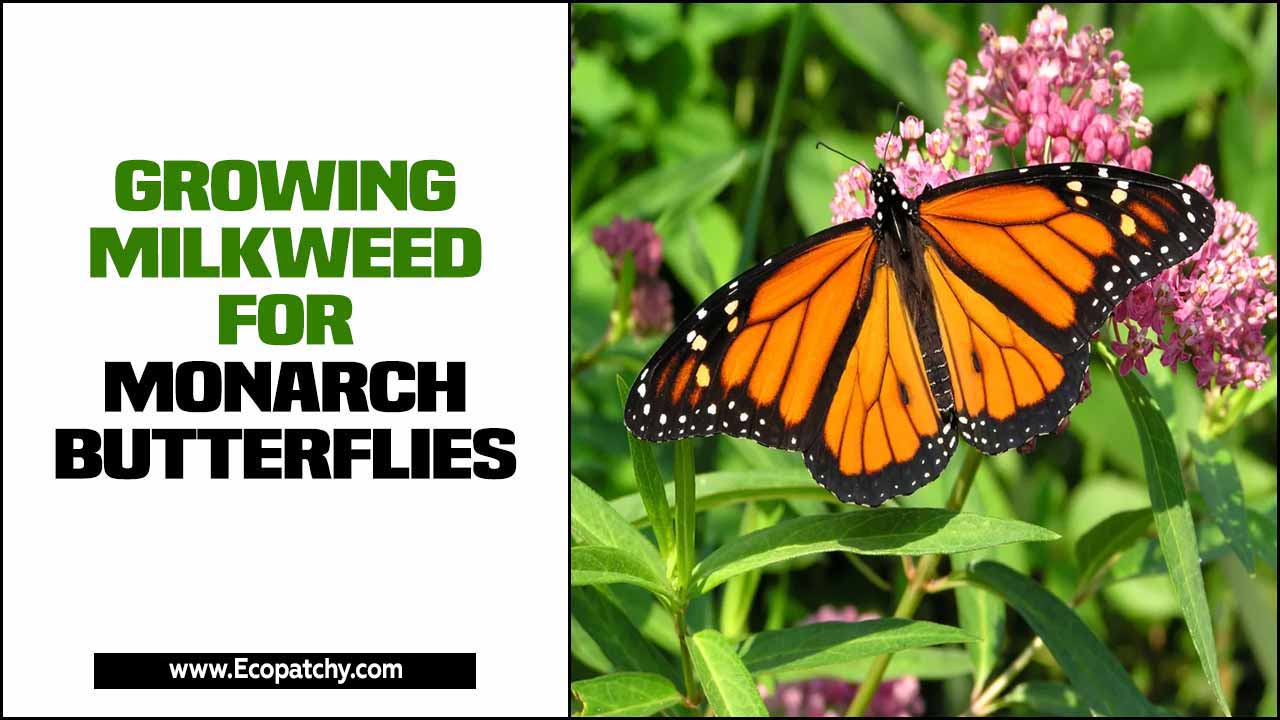Butterfly bushes, also known as buddleia, have long been popular among gardeners for their beautiful and vibrant flowers. These deciduous shrubs, native to Asia and Africa, have become a staple in many gardens worldwide due to their easy maintenance and ability to attract various pollinators.
From their stunning blooms to their environmental benefits, butterfly bushes have much to offer to any garden or landscape. Here, we will cover everything you need to know about planting and growing butterfly bushes. We’ll start by giving you an overview of butterfly bushes and why they’re so attractive to pollinators.
Then we’ll dive into the step-by-step process of planting and caring for your butterfly bushes, from choosing the right location to pruning and pest management. Lastly, we’ll discuss common problems you might encounter while growing butterfly bushes and how to deal with them effectively.
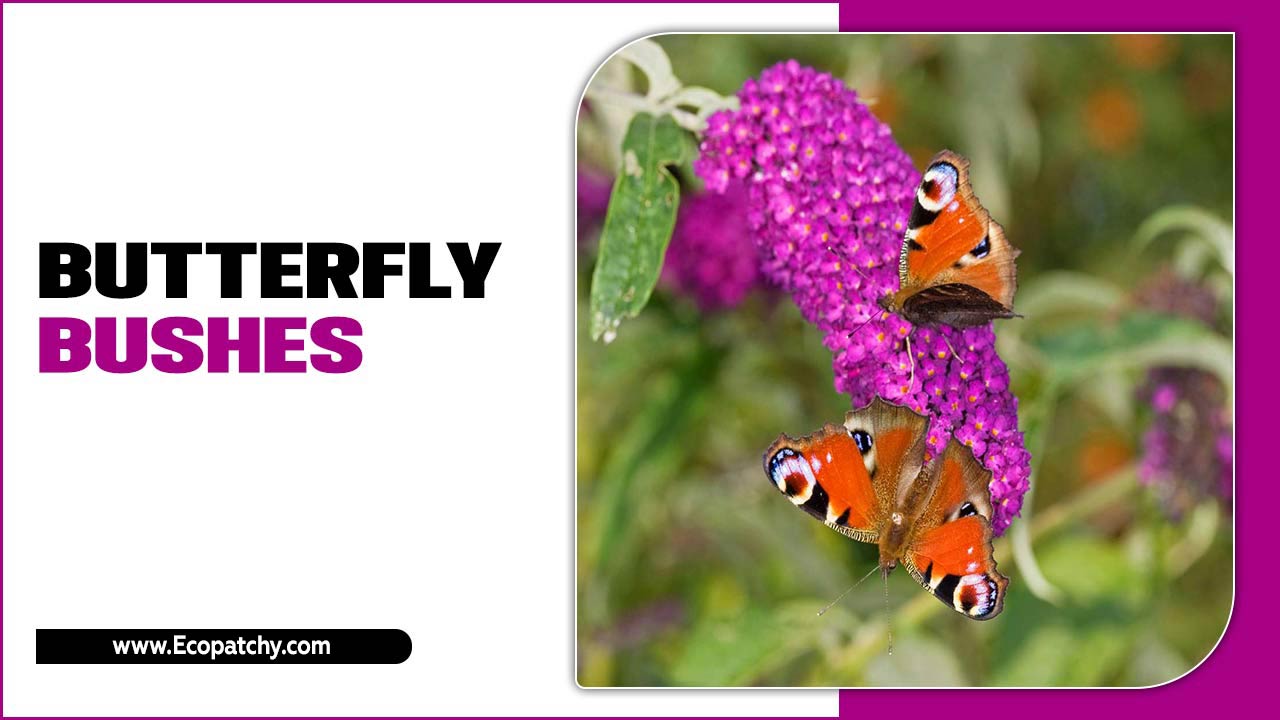
About Butterfly Bushes
Butterfly bushes, or buddleia davidii or summer lilacs, are deciduous shrubs native to North America. These tough plants are cherished for their showy flower clusters that attract beneficial insects like butterflies and bees. They can tolerate warmer climates and are often used in cottage gardens or small spaces.
However, it’s important to note that some varieties of butterfly bushes have invasive tendencies, so verifying their suitability for your area is crucial. With their vibrant flower heads and ability to withstand harsh conditions, butterfly bushes provide maximum impact in gardens.
The Attraction Of Butterfly Bushes
Butterfly bushes, scientifically known as Buddleia davidii or Buddleja davidii, produce large flower spikes that are highly attractive to butterflies. These flowers come in various colors, including purple and white, adding to their visual appeal. Apart from their beauty, the nectar-rich blooms serve as a valuable food source for adult butterflies.
Additionally, butterfly bushes offer shelter and resting spots for these delicate creatures. The fragrance of the flowers further enhances their attraction. If you want to create a butterfly-friendly garden, these tough plants can bring maximum impact to small spaces with their showy flower clusters.
Steps To Plant And Grow Butterfly Bushes
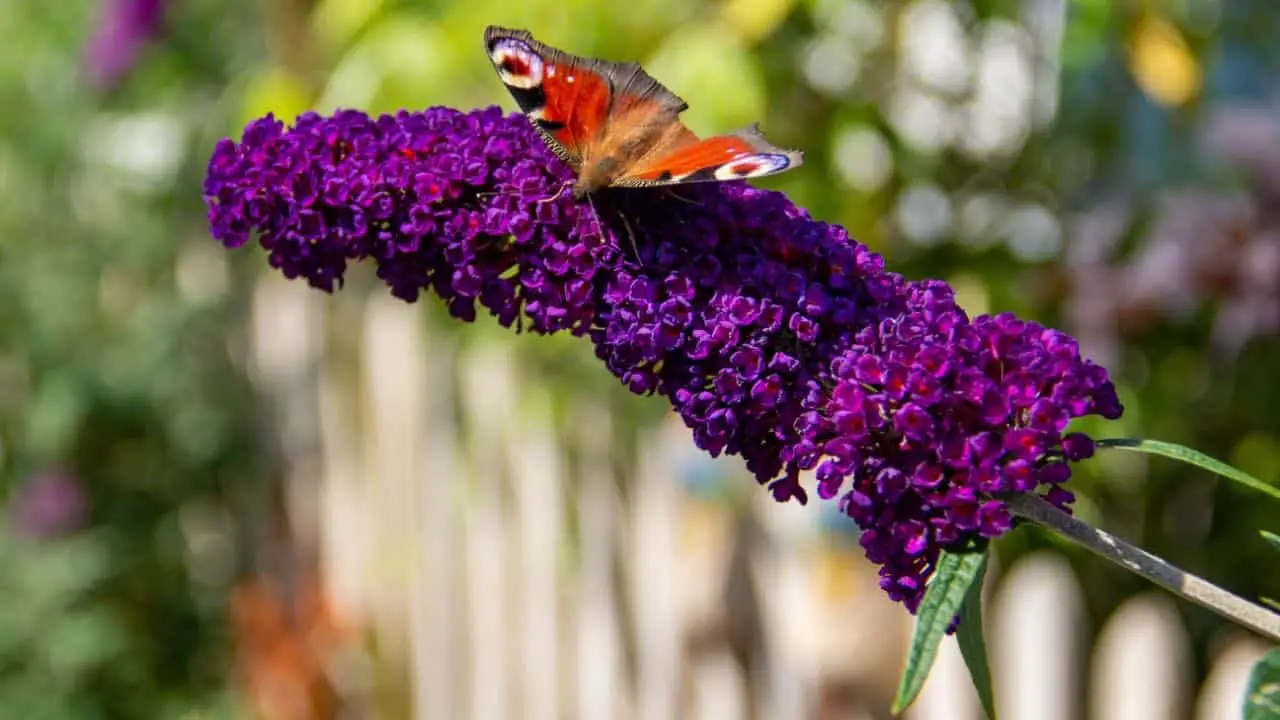
Planting and growing butterfly bushes is a great way to attract beautiful butterflies to your garden. Butterfly bushes, also known as buddleia, are popular in gardens and landscapes due to their vibrant colors and ability to attract butterflies.
These beautiful flowering shrubs come in various colors, including purple, pink, white, and yellow, making them a standout addition to any outdoor space. Not only do butterfly bushes add visual appeal to a garden, but they also serve an important purpose in supporting local butterfly populations.
By following these steps, you can create a welcoming habitat for butterflies while enjoying the beauty of butterfly bushes in your garden. Here are some steps to help you successfully plant and grow butterfly bushes.
1:Butterfly Bush Care Starts With Choosing The Right Planting Location

When caring for butterfly bushes, selecting the right planting location is crucial. These plants thrive in full sun and well-drained soil, so choose a spot that meets these requirements. Additionally, consider good air circulation to prevent diseases from affecting the plant.
Remember the mature size of the butterfly bush when selecting a location to avoid overcrowding. It’s also important to avoid planting near sidewalks or foundations, as the roots can cause damage. Regular pruning will help maintain the shape and overall health of the plant.
2:Before Planting Butterfly Bushes, Verify They Are Not Invasive To Your Area
Before planting butterfly bushes, verifying that they are not classified as invasive in your area is essential. Research your region’s regulations and restrictions regarding planting these beautiful flowering shrubs. Consider the specific variety of butterfly bush you wish to plant and ensure it is not labeled as an invasive species.
If butterfly bushes are deemed invasive in your area, consider planting native species more beneficial to local wildlife. Take precautions to prevent the spread of non-native plants and protect the delicate balance of your local ecosystem.
3:Choose The Butterfly Bush Varieties Best Suited For Your Gardening Needs
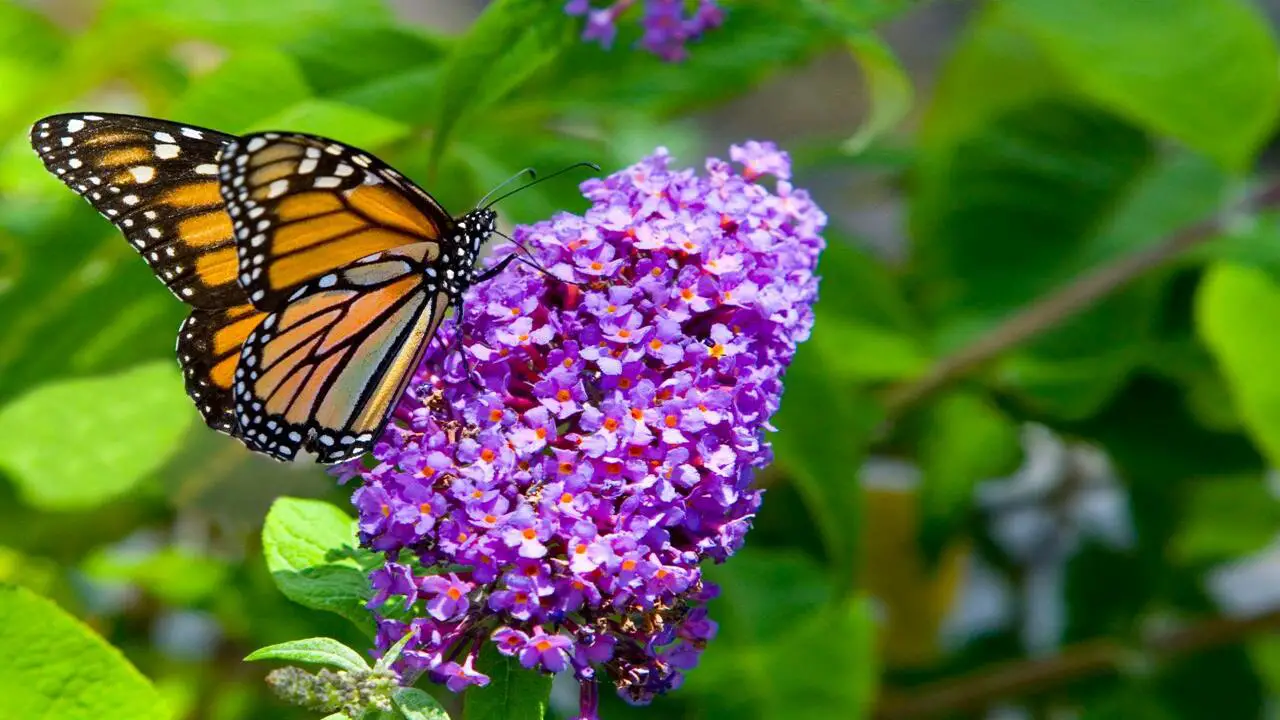
When selecting butterfly bush varieties for your garden, it’s important to consider multiple factors. Firstly, determine the size of your garden and the available space for butterfly bushes. This will help you choose varieties that fit well in your garden. Next, research different buddleia davidii species and their specific growth habits and requirements.
Consider factors such as bloom time, color, and fragrance to create a visually appealing and aromatic garden. Consulting with a local nursery or gardening expert can provide valuable recommendations on your area’s best butterfly bush varieties.
4:Plant Butterfly Bush In Full Sun In Fertile Well Drained Soil
Planting butterfly bushes is a straightforward process. These tough plants thrive in full sun, requiring at least 6 hours of direct sunlight daily. To ensure their well-being, choosing a fertile, well-drained soil that prevents root rot and promotes healthy growth is essential.
In the first year, fertilize the bush with a balanced fertilizer during spring. Additionally, prune the plant in late winter or early spring to encourage new growth and maintain its shape. Following these steps’ll set your butterfly bush up for maximum impact in your garden.
5:Water Your Butterfly Bushes Regularly For The Best Performance
Watering your butterfly bushes regularly is crucial for ensuring their best performance. These plants have a high water requirement, particularly during dry periods. To promote deep root growth, water them deeply and thoroughly. However, be cautious not to overwater, as this can lead to root rot and other issues.
Applying a layer of mulch around the base of the plant will help retain moisture and regulate soil temperature. For more efficient and consistent watering, consider using a drip irrigation system.
6:Add A Balanced Fertilizer In The Spring

Butterfly bushes benefit from adding a balanced fertilizer in the spring to promote healthy growth. Opt for a slow-release fertilizer that contains equal amounts of nitrogen, phosphorus, and potassium. Following the instructions on the package when applying the fertilizer is crucial, ensuring not to over-fertilize, as it can be detrimental.
Avoid fertilizing too late in the season to prevent vulnerable new growth susceptible to winter damage. Alternatively, organic fertilizers can be used to provide nutrients without harsh chemicals. Regular fertilization ensures that your butterfly bushes continue to bloom and thrive in your garden.
7:Keep The Bushes Well Pruned
Proper pruning is essential for the overall health and growth of butterfly bushes. Regularly removing dead or damaged branches helps maintain the plant’s vitality. It is best to prune in early spring before new growth begins, eliminating any crossing or rubbing branches. Keeping the bush’s centre open allows for better circulation of light and air. To control the height of the butterfly bush, cut back one-third of the plant’s total height each year.
8:Keep On Top Of Pest Pressure
To ensure the health of your butterfly bushes, it’s important to stay vigilant against pest pressure. While these plants attract butterflies, they also attract other insects like aphids, spider mites, and caterpillars. Regularly inspect your plants for signs of infestation, such as yellowing leaves or small holes in the foliage.
Instead of using chemical pesticides, consider natural methods like introducing ladybugs or applying neem oil. If the infestation is severe, pruning or removing affected parts may be necessary. Additionally, maintaining a clean and tidy garden can help reduce the likelihood of insect pests.
9:Quickly Identify And Manage Butterfly Bush Diseases
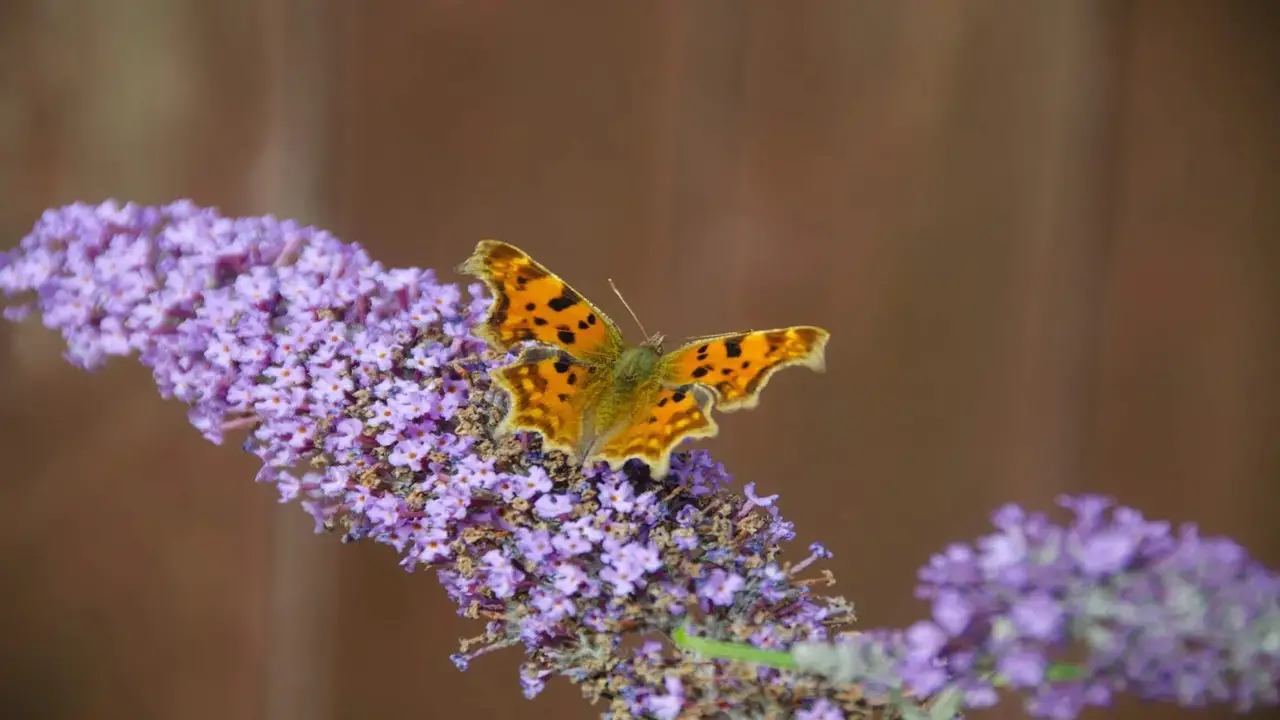
Butterfly bushes, also known as Buddleia davidii or summer lilacs, are tough plants that can attract various insects, including butterflies. However, they are also susceptible to certain diseases. One common disease is powdery mildew, which manifests as white powdery spots on the leaves. It can be treated with fungicides or by removing the affected leaves.
Another disease is verticillium wilt, which causes yellowing and wilting of leaves. Infected plants should be removed and destroyed to prevent spreading. Control botrytis blight, a grey mould on leaves and flowers, by improving air circulation and removing affected parts.
Root rot, characterized by rotting roots and wilting plants, can be prevented by improving soil drainage and avoiding overwatering. Crown gall, which causes tumour-like growths on the stem, should be controlled by removing and destroying infected plants. To prevent aphid infestations, use insecticidal soaps or neem oil.
Dealing With Common Pests And Plant Diseases
Butterfly bushes are susceptible to various pests and plant diseases, but you can keep your plants healthy and thriving with proper care and attention. One common pest that affects butterfly bushes is aphids. These tiny insects feed on the plant’s sap and can cause stunted growth and distorted leaves.
To control aphids, you can spray the affected areas with a strong stream of water or use insecticidal soap. Another common pest is the butterfly bush borer, which burrows into the plant’s stems and causes wilting and dieback. Pruning infected branches and applying an insecticide can help control this pest.
Regarding plant diseases, powdery mildew is a common issue for butterfly bushes. This fungal infection appears as a white powdery coating on the leaves and stems of the plant. To prevent powdery mildew, ensure your plants have good air circulation and avoid overhead watering. You can treat powdery mildew with a fungicide specifically designed for this disease if necessary.
What Are The Common Problems Encountered While Growing Butterfly Bushes?
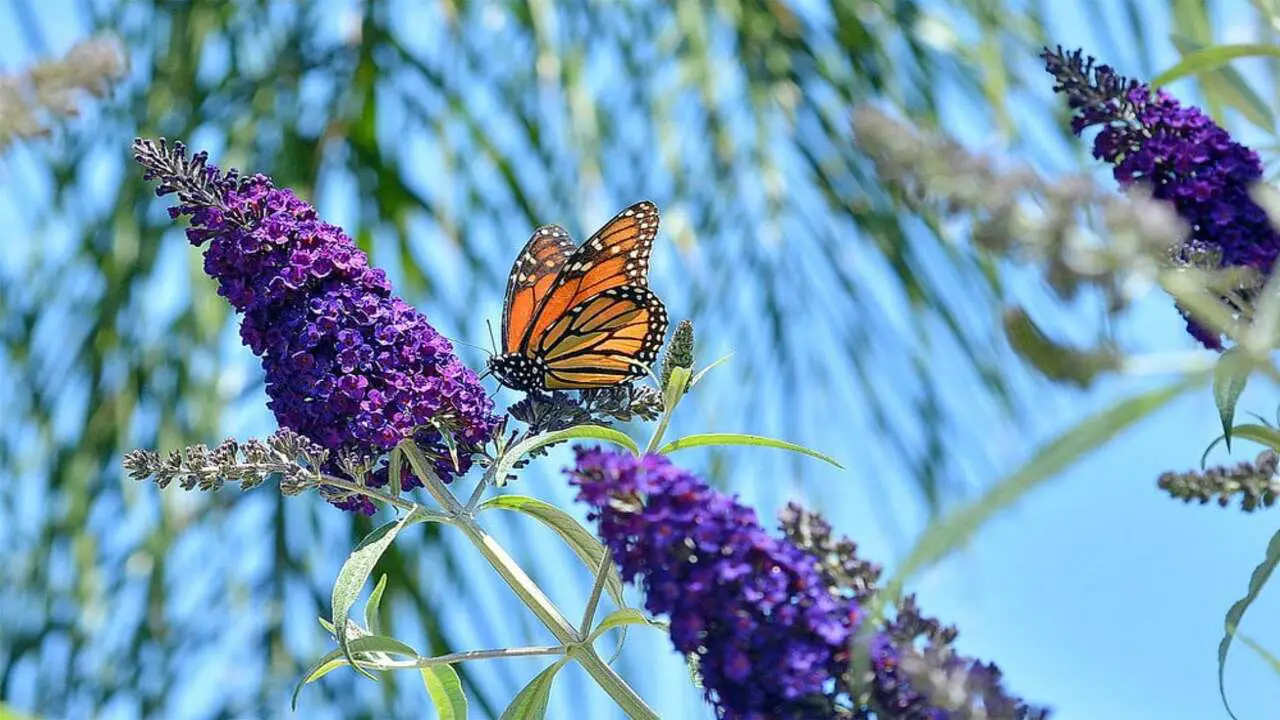
While butterfly bushes are generally low-maintenance plants, there are some common problems that you may encounter while growing them. One issue is root rot, which can occur if the soil is too wet or poorly drained. To prevent this, plant your butterfly bush in well-draining soil and avoid overwatering.
Another problem is powdery mildew, a fungal disease that can cause a white powdery coating on the leaves. This can be prevented by adequate air circulation around the plant and by avoiding overhead watering.
Additionally, butterfly bushes can sometimes attract pests such as aphids and spider mites. Regularly inspect your plants and use appropriate insecticides if necessary to keep these pests under control.
Conclusion
Growing butterfly bushes can be a rewarding experience for any gardener. These beautiful and fragrant plants are attractive to butterflies and add beauty to any garden or landscape. Following the steps outlined in this guide ensures that your butterfly bushes thrive and flourish.
From choosing the right planting location to keep them well pruned and managing pest pressure, taking care of these plants is essential for optimal growth. With proper care and attention, you can enjoy the vibrant colors and delightful presence of butterflies in your garden for years.
Frequently Asked Questions
1.Where Is The Best Place To Plant A Butterfly Bush?
Ans: For optimal growth, plant butterfly bushes in a location that receives at least 6 hours of direct sunlight daily. Choose well-draining, fertile soil with a pH range of 6.0-7.5. Protect the bush from strong winds and ensure enough space for it to thrive.
2.Do Butterfly Bushes Come Back Every Year?
Ans: Butterfly bushes are perennials, meaning they can come back year after year. You can promote healthier growth and beautiful blooms by following proper pruning techniques and providing the right growing conditions, such as full sun and well-drained soil. Remember to adjust watering based on climate and location.
3.What States Is Butterfly Bush Illegal?
Ans: Butterfly bush is considered invasive in certain states like Oregon, Washington, and Maine. Planting butterfly bushes in these states is illegal due to their potential to harm native species. Before planting in other states, consult your local extension office for guidelines. Consider native species if butterfly bush is illegal in your state.
4.Does Butterfly Bush Spread?
Ans: Butterfly bush has the potential to spread and become invasive in certain areas. To prevent spreading, it’s important to deadhead spent blooms before they can produce seeds. Additionally, planting butterfly bushes in containers or using a root barrier can help control its spread. Always check with your local extension office to determine if butterfly bush is considered invasive in your area.
5.What Are Some Native Alternatives To Butterfly Bushes?
Ans: Some native alternatives to butterfly bushes include coneflowers (Echinacea), bee balm (Monarda), black-eyed Susans (Rudbeckia), and goldenrod (Solidago). These native plants offer food and habitat for butterflies and other pollinators.

